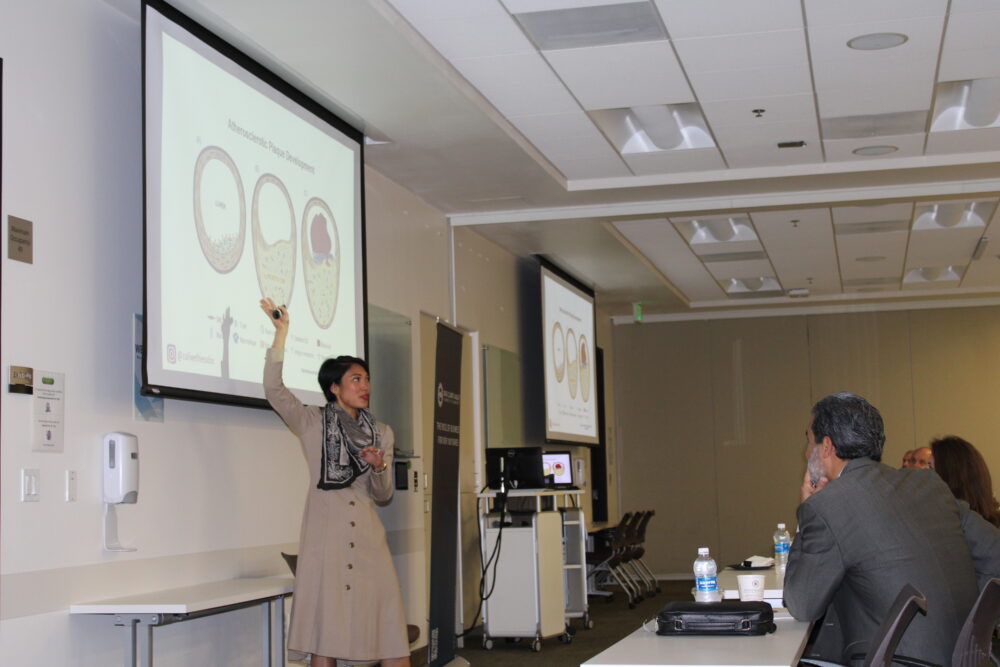Copyright Santa Clarita Valley Signal

Henry Mayo Newhall Hospital welcomed the Santa Clarita Valley Chamber of Commerce and members from the business community for a panel discussion Thursday on the benefits of lifestyle medicine. The Health and Wellness Forum included a startling report that drew audible gasps from the dozens inside the Henry Mayo Center’s conference room: By the age of 10, almost all American kids will already have the first stages of heart disease. It can start in utero, said Dr. Regina Ragasa, a board-certified physician in family, lifestyle and obesity medicine, explaining how doctors are now seeing “fatty streaks” in babies whose mothers are dealing with high cholesterol levels. There was a lot of good news in the messaging also, though, according to Ragasa and Dr. James Lee, an interventional cardiologist from UCLA Health. Both shared a preference toward diet change versus medication after he saw significant results in his patients. Ragasa shared story after story of how a plant-based diet lowered her patients’ weight, cholesterol, blood pressure and even their diabetes. Patients used her basic rules, such as avoid ultra-processed foods and animal byproducts from steak to cheese, and replace them with beans and rice, as examples, to cut their levels by one-third to even one-half, she said. She also encouraged people who might be looking at weight loss to consider a gradual introduction. She shared studies that showed measurable benefits even with a portional replacement of what she considered “ultra-processed foods,” such as Oreos, or items that encourage cholesterol, which are most animals and animal byproducts, with a plant-based diet. Russell Gage, director at Henry Mayo’s fitness center, also discussed some of the benefits of physical fitness, but the talk was geared more toward the significant changes that can be made through diet. All three panelists mentioned how important it is for people to adopt practices that they think are sustainable for a lasting change versus trying to create a drastic improvement. They also mentioned that a common folly was efforts to lose weight through exercise, explaining that’s not realistic for most people, because it takes hours of regular workouts for significant weight loss to occur, and most don’t have that kind of time. Lee talked about how training in Western medicine doesn’t really allow time for doctors to learn and understand the information Ragasa was sharing. “I trained at a hospital in New York City, in Manhattan, where I did 1,200 procedures in one year. You have no time to talk about diet. On the weekend, I saw 90 patients,” he said. But he was intrigued by some literature and, after watching one of his overweight patients get rid of nine blood pressure medications and more than 120 pounds — to the point where family worried about a possible cancer diagnosis — Lee was convinced there’s something to it. Now there are changing attitudes, he said, but still challenges, adding the system incentivizes doctors to implement preventative practices with their patients as a way to standardize care and encourage new means. But this system also frowns upon his hesitancy to turn to prescribe statins that lower cholesterol production in the liver. “The entire health industry does not incentivize a doctor to talk about lifestyle medicine. So, when you meet a doctor who talks about this stuff,” he said, referring to Ragasa’s messaging, “these are rare doctors right now in our entire U.S. health system. I can tell you, my personal journey for going into this area was 100% motivated through my patients.”



